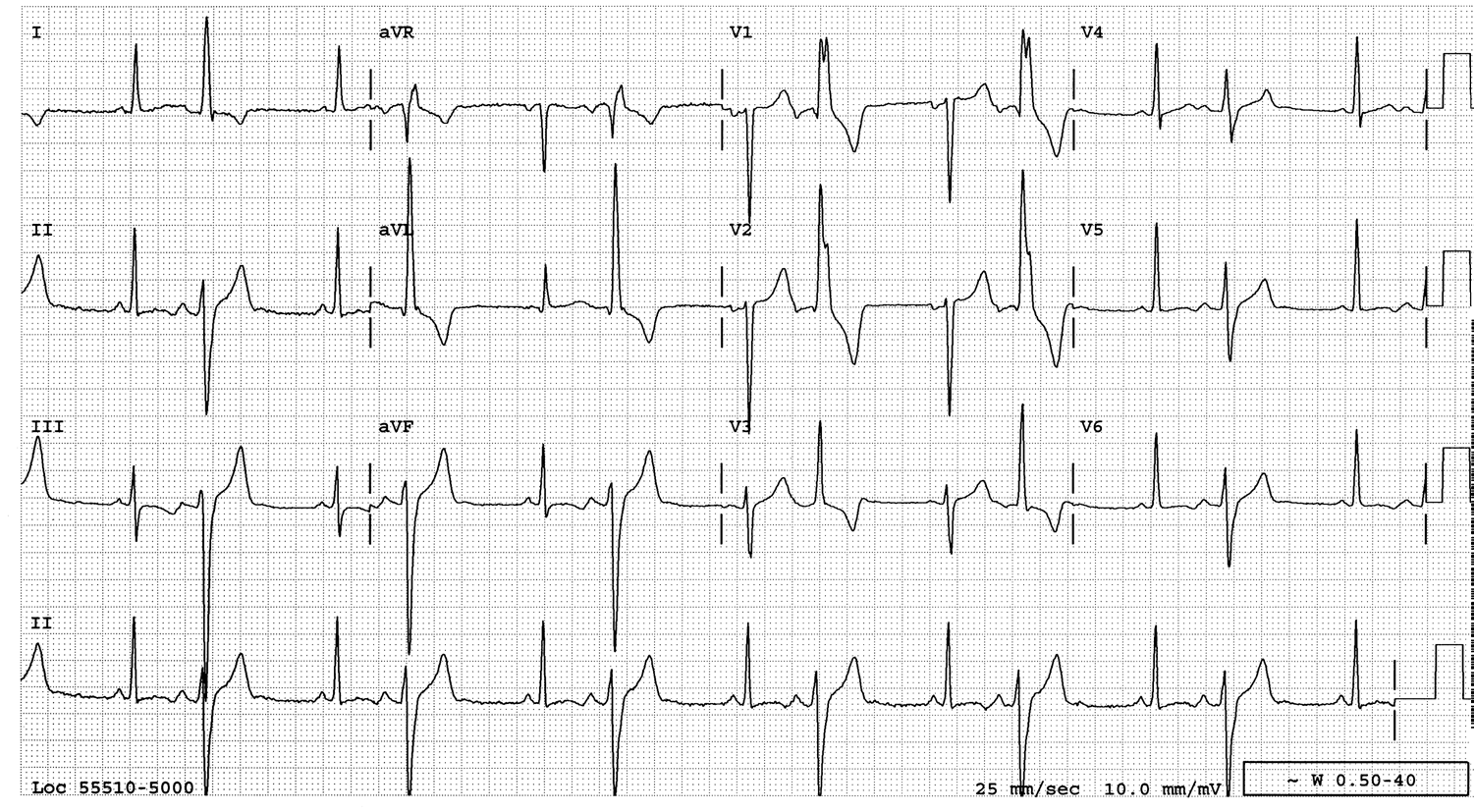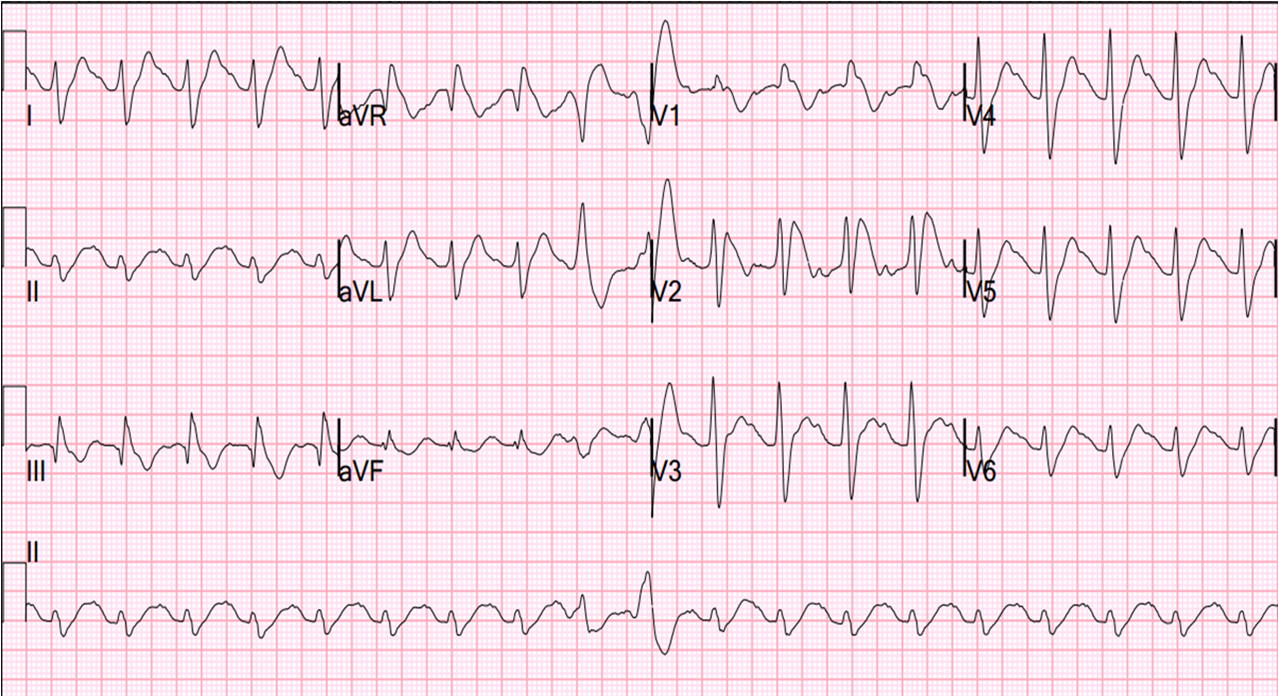Medics recorded this ECG at time 0 in a patient with chest pain:
 |
| There are inferior hyperacute T-waves, with reciprocally inverted hyperacute T-wave in aVL, and a biphasic (down-up) T-wave in V2 and V3, as well as ST depression in I and V4-V6. |
“Down-up” biphasic T-waves should always be thought to be reciprocal of “up-down” (Wellens’ type) reperfusion T-waves. (Alternatively, if you see a down-up T-wave, it may actually be a down T-wave followed by an upright U-wave, if it happens very late.) Thus, this is probably inferior-posterior STEMI, possibly with some degree of reperfusion.
The chest pain began to resolve after NTG (t = 2 minutes):
 |
| Inferior T-waves are slightly smaller, and there is less negativity to the T-waves in V2 and V3 |
Another was recorded at t = 4 minutes:
 |
| Now inferior T-waves are not at all hyperacute and the precordial T-waves are mostly upright. Clearly, this is a reperfusing inferoposterior MI. There are down-up T-waves in V4-V6. |
Here is t = 13 minutes, with posterior leads V7-V9:
Here is t = 14 minutes (simultaneous to previous):
 |
| T-waves are upright in V4-V6, reciprocal to the inverted T-waves in V7-V9, but not exactly because these are not 180 degrees opposite each other. V2 and V3 are another example of posterior reperfusion T-waves. |
Angiogram showed an open culprit artery supplying the inferior and posterior walls





Awesome case. Really shows off the dynamicity of T-waves with respect to acute occlusional ischemia. I believe the T-waves are the most under-appreciated ECG findings/clues to occlusion- a beautiful thing really. In fact, we see here that you don't even need to look at the ST segments to make the diagnosis!
Sam
Yes, I love this one!
Great read and some great examples.
i'm five years late, but this is very interesting Steve.
it makes me wonder… of the 30 ekg's that are placed before me from triage (is this a stemi, doc?), and the multitude of T wave abnormalities i encounter, where in the process is this particular person at this time?
so much to consider, i think.
Tom,
It helps to correlate the patient's pain state with the ECG findings. If T-wave is inverted and patient still has pain, then that inversion is probably reciprocal to a hyperacute T-wave on the opposite wall. If patient is pain free, then that inversion is probably reperfusion.
See this paper we wrote: http://emj.bmj.com/content/34/2/119
Steve